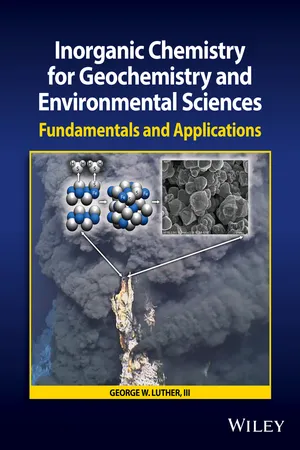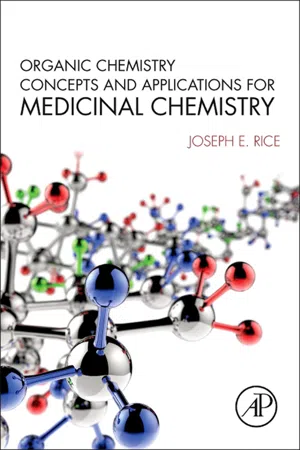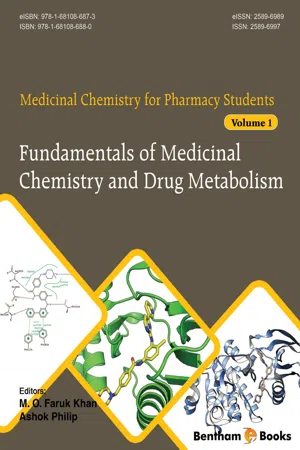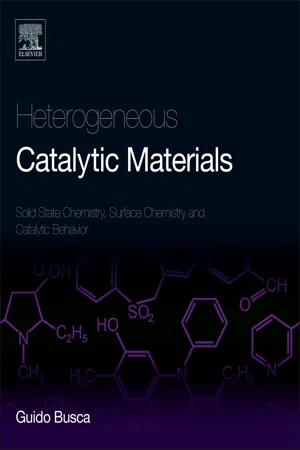Chemistry
Introduction to Acids and Bases
"Introduction to Acids and Bases" is a fundamental concept in chemistry that explores the properties and behavior of acidic and basic substances. Acids are characterized by their ability to donate protons, while bases can accept protons. Understanding the behavior of acids and bases is crucial in various chemical reactions and has wide-ranging applications in fields such as medicine, industry, and environmental science.
Written by Perlego with AI-assistance
Related key terms
Related key terms
1 of 4
Related key terms
1 of 3
11 Key excerpts on "Introduction to Acids and Bases"
- eBook - ePub
Environmental Process Analysis
Principles and Modeling
- Henry V. Mott(Author)
- 2013(Publication Date)
- Wiley(Publisher)
Herein, we will consider acid–base concepts as applicable in aqueous solutions. When applied qualitatively in the context of an aqueous solution, the adjectives acidic and basic might mean that the pH of the solution is below or above seven, respectively. Again, qualitatively speaking, we can have mildly, moderately, strongly, or severely acidic or basic solutions, depending upon the level of the pH. In some cases, mildly acidic solutions, depending upon the character of the dissolved substances, can have large values of acidity, indicative of large abundances of constituents that can donate protons, while moderately or even strongly acidic solutions can have low values of acidity, indicative of small abundances of proton-donating substances. In this chapter, we will delve into the details behind these happenstances. We will learn about the system the science of chemistry has provided us to quantitatively understand acid–base behavior. We will then learn how to apply these acid–base principles in the analysis of some fairly simple environmental systems. We will also combine employment of acid/base principles with employment of Henry’s law, allowing us to consider heterogeneous air–water systems in an integrated context.We should agree on a few definitions to get us started in our examination of acids and bases:Acid: A chemical specie that can under the correct circumstances donate a proton (a hydrogen ion) via chemical reaction.Base: A chemical specie that can under the correct circumstances accept a proton (a hydrogen ion) via chemical reaction.Acidity: A quantitative measure of the ability of an aqueous solution to donate protons, measured by titration from an initial pH to a designated end point using a strong base.Alkalinity: A quantitative measure of the ability of an aqueous solution to accept protons, measured by titration from an initial pH to a designated end point using a strong acid.Buffering capacity: A mostly qualitative term used to describe the capacity of a solution to either accept or donate protons. Solutions of large buffering capacity contain species that either can accept or donate protons while the pH of the solution changes little.Conjugate acid: The chemical specie formed from the acceptance of a proton by its conjugate base.Conjugate base: The chemical specie formed from the donation of a proton by its conjugate acid.Acid system: The collective set of aqueous species containing a specific base, of the fully deprotonated base and all conjugate acids of that base.6.2 PROTON ABUNDANCE IN AQUEOUS SOLUTIONS: pH AND THE ION PRODUCT OF WATER
Chemistry has developed a methodology to measure the abundance of protons in aqueous solutions and a system for reporting the values. Generally, a pH probe and meter is used. The specific electrochemistry applied renders the pH probe to be specific to hydrogen ions. In direct (not necessarily linear) relation to the abundance of hydrogen ions in solution, an electrochemical potential between the solution and the probe arises. The potential is measured (typically in millivolts) and transmitted to the meter for display. Most pH meters have capacity to display output in mV as well as in pH units. Then, through understandings of the acid–base character of specific conjugate acid–conjugate base pairs, standard solutions of known proton abundance are created for use in calibration of pH meters. These standard solutions are used to calibrate the measured potential against a set of known standards. Most often these standard solutions, called buffers, have nominal pH values of 4.0, 7.0, and 10.0. We immerse the probe into these solutions, one at a time and set the readout of the meter to correspond with the value of the buffer being measured. Once it is calibrated, the pH meter can be employed to measure the hydrogen ion abundance in otherwise unknown solutions. The measured potential of the unknown solution is compared (via programming resident in the meter) with the calibration potentials and the pH of the solution is displayed by the meter. - eBook - ePub
Chemistry
Concepts and Problems, A Self-Teaching Guide
- Richard Post, Chad Snyder, Clifford C. Houk(Authors)
- 2020(Publication Date)
- Jossey-Bass(Publisher)
13 Acids and BasesChapters 11 and 12 gave you an indication that all acids have certain properties in common and all bases have certain properties in common. The major common property is that acids react with bases (and vice versa) to produce salts. For example, if solutions of HCl (an acid) and KOH (a base) are mixed, the following reaction occurs.Such a reaction gives a solution that no longer has the acidic or basic properties that were evident before mixing, provided the correct volumes and concentrations were used.What then is an acid? What is a base? There are three definitions that have been developed through the years. Each has its own particular usefulness, depending upon the nature of the reactants and the conditions of the reaction. In this chapter we will discuss each of the definitions and their particular usefulness.Our discussion of acids and bases will touch on several other important concepts, including reactions of salts with water, another concentration term specially developed for acid–base solutions, and the importance of acid–base chemistry to physiological and industrial processes.OBJECTIVES
After completing this chapter, you will be able to- recognize and apply or illustrate the following: Arrhenius, Brønsted–Lowry, and Lewis acids and bases, neutralization, hydrolysis, pH, buffer solution, titration, conjugate acid or base, amphiprotic, indicator, hydronium ion, and hydrated;
- write a chemical equation for a neutralization reaction between any acid and base;
- predict whether a solution of a given salt will be acidic, basic, or neutral;
- calculate the pH of a solution when given:
- the degree of ionization of a weak acid or base and vice versa,
- Kaor Kbof the acid or base and vice versa,
- the concentration of a solution of a strong acid or base;
- solve titration problems.
ARRHENIUS ACIDS AND BASES
There are several chemical theories of acids and bases. The most familiar is that of Arrhenius. According to the Arrhenius definition, an acid is any substance that produces or increases the H+ ion concentration in an aqueous solution (remember, water is the solvent). Both HCl and HC2 H3 O2 can increase the H+ ion concentration of water. Do HCl and HC2 H3 O2 - eBook - ePub
Inorganic Chemistry for Geochemistry and Environmental Sciences
Fundamentals and Applications
- George W. Luther(Author)
- 2016(Publication Date)
- Wiley(Publisher)
Chapter 7 Acids and Bases 7.1 Introduction Acids and bases have been known since before Roman times, for their ability to transform a chemical substance into other chemical forms. For example, sulfuric acid (, oil of vitriol; vitriolic acid) could be produced by the aqueous oxidation of pyrite, which is a common mineral used for many purposes [1]. dehydrates sugar as well as metal hydrates with sometimes dramatic color changes, and also dissolves metals via redox reactions. It is normally the chemical that is produced and sold in greatest quantity in the world each year. The first base was called lye, which was obtained by leaching ashes with water producing potassium hydroxide solution. Lye is a common name for bases, which are used in a variety of purposes including wood degradation into paper or fibers and soap production. 7.2 Arrhenius and Bronsted–Lowry Definitions Common acids such as hydrochloric acid (HCl) and nitric acid were not formally prepared until about the 16th century, so formal definitions of acids and bases similar to bonding theories are relatively new. In 1884, Svante Arrhenius defined an acid as a chemical species that when dissolved in water produced the hydrogen ion,. Although useful, the definition is limited as it does not encompass a large variety of reactions and only considers water as solvent. In 1923, Brønsted and Lowry defined an acid and base reaction as one that involves a hydrogen ion transfer between two reactants. The acid is the hydrogen ion donor (the Brønsted acid) and the base is the hydrogen ion acceptor (the Brønsted base). This definition applies to all solvents and the gas phase. For example, the reaction between HCl and can occur in water as solvent or in the gas phase (an atmospheric reaction) and results in complete transfer to form the hydronium ion, - Joseph E. Rice(Author)
- 2014(Publication Date)
- Academic Press(Publisher)
Chapter 4Acids and Bases∗
Abstract
This chapter provides a review of the concept of acids and bases. Since drugs work mainly within an aqueous environment in the body, the largest part of this chapter is concerned with acid–base properties in water. Factors that affect the equilibrium between an acid and its conjugate base, or a base and its conjugate acid, are discussed. The concept of salts as products of acid–base reactions is then introduced. Using a generalized acid, the Henderson–Hasselbalch equation is derived and its use in predicting the degree to which an acid or base is ionized in an aqueous solution of known pH is explored. A method for rapidly predicting approximate acid–base strength for a wide range of functional groups is then presented, making use of a device known as the pK a –pK b calculator. The final section serves as a brief introduction to the concept of Lewis acids and bases.Keywords
Acid ; Base ; Equilibrium ; Henderson–Hasselbalch equation ; Ionization ; Lewis acid ; Lewis base ; Neutral ; SaltDrug molecules find themselves in an aqueous environment once they enter the body. Depending on the nature of whatever functional groups the drug possesses, it will generally behave as either an acid or a base and will exist to a certain extent as a charged species. The degree to which this occurs will play a role in determining how that drug gets distributed throughout the body. Thus an understanding of the concepts of acids and bases is a critical aspect of medicinal chemistry. The definition of the terms acid and base however depends upon which of the two theories (Brønsted–Lowry or Lewis ) is most applicable to the situation at hand. When dealing with aqueous solutions, the Brønsted–Lowry theory is most commonly invoked, although Lewis acidity and basicity is still important. In this chapter, we will focus first on the Brønsted–Lowry theory in which an acid is defined as a group that can donate a proton (a hydrogen cation) and a base- eBook - ePub
Chemistry
With Inorganic Qualitative Analysis
- Therald Moeller(Author)
- 2012(Publication Date)
- Academic Press(Publisher)
In this chapter two major methods of defining acids and bases are introduced—the Br0nsted–Lowry system, based on proton donation; and the Lewis system, based on electronpair donation. The behavior of acids and bases in aqueous systems is discussed in detail. Structural factors that influence the strengths of these acids and bases are examined, as are equilibria in aqueous solutions of acids and bases.Y ou should learn a few practical things about acids and bases, if you have not already experienced them . (How Ira Remsen, founder of the chemistry department at Johns Hopkins University, discovered the properties of nitric acid in the 1800s is described in the Thoughts on Chemistry at the end of this chapter.) Acids and bases can hurt you —from the stinging sensation when you accidentally squirt lemon juice (citric acid ) in your eye to very severe and persistent burns if you spill battery acid (sulfuric acid ) or lye (sodium hydroxide ) on your skin and do not immediately flush it with water.One of the classical properties by which acids were first identified is a “sour taste.” This has been well established —so we caution you not to test it by tasting any acids (or bases) in the laboratory. Think of vinegar, tomatoes, or lemon juice —that should convince you that acids are sour.Acids and bases can also eat holes in clothing. You might first realize that an acidic or basic solution has splashed on you when your shirt or blouse comes out of the washing machine with little holes where the fabric was weakened. If you spill concentrated acid or base directly on your clothing, the effect will be immediately noticeable and the garment probably ruined. The conclusion is obvious— acids and bases must be handled with care.Ways of defining acids and bases
Arrhenius (Section 4.8 ) introduced a concept of acids and bases in 1887. He proposed that the properties of acids are related to the H+ ion and that the properties of bases are related to the OH− ion. Over the years acids and bases have been redefined in several other ways. The result of these new definitions has been the inclusion of many more molecules and ions in the categories of acids or bases. Most chemical reactions can now be considered to be either acid-base reactions or oxidation–reduction reactions (Section 4.12 and Chapter 19 - eBook - ePub
- Tony Farine, Mark A. Foss(Authors)
- 2013(Publication Date)
- Routledge(Publisher)
5 Acids, bases and pH balance Learning outcomes After reading the following chapter and undertaking personal study, you should be able to:1 Define the terms ‘acid’ and ‘base’.2 Identify examples of acids and bases that are encountered in everyday life and clinical practice.3 List the properties of acids and bases.4 Outline the first-aid measures to be taken in chemical burns.5 Describe the pH scale and identify clinical practice situations in which it is used.6 Identify the products of a reaction between an acid and a base and give an example of this reaction in clinical practice.7 Distinguish between the meaning of the terms ‘strength’ and ‘concentration’ when used in connection with acids and bases and relate this to clinical practice.8 Define the term ‘buffer’ and give examples in the body.9 Outline the regulation of acid–base balance in the body by reference to buffer systems, respiratory regulation and renal regulation.10 Using the results of laboratory tests, identify an acid–base imbalance as either acidosis or alkalosis and distinguish the cause as either respiratory or metabolic.IntroductionStudents who have not studied science before may be unfamiliar with the terms ‘base ’ and ‘alkali ’. (In this book, the terms ‘base’ and ‘alkali’ are taken to be synonymous.) However, few will not have heard of the term ‘acid ’. Although this term may conjure up images of dangerous caustic substances that are best avoided, we often encounter acids and bases in our everyday lives. They are important substances in the environment, we use them as drugs and they have particular relevance to us in health or disease. Nonetheless, since some acids and bases are potentially dangerous, a brief explanation of the relevant first aid is given in Practice point 5.1 - eBook - ePub
- Jeffrey Gaffney, Nancy Marley(Authors)
- 2017(Publication Date)
- Elsevier(Publisher)
Chapter 5Acids and Bases
Abstract
This chapter explains the differences between the Brønsted-Lowry and Lewis definitions of acids and bases and gives examples of each. Since chemical reactions involving Lewis acids and bases are covered in more detail in Chapter 10, most of the chapter is dedicated to the applications of the Brønsted-Lowry concepts. This includes the strength of acids and their conjugate bases, the behavior of acids and bases in aqueous solution, the autoionization of water, and the acid ionization constants. The “p” functions, including pH, pOH, pK a , pK b , and pK w , are discussed. The function and uses of buffer solutions are explained along with their design using the Henderson-Hasselbalch equation. Titration procedures are discussed and their relevance to industrial situations is stressed.Keywords
Brønsted-Lowry; Lewis acid; Conjugate pairs; Ionization constant; Amphoteric; Coordinate-covalent bond; Coordination complex; Buffer solution; Henderson-Hasselbalch; TitrationOutline5.1Defining Acids and Bases5.2Acids and Bases in Aqueous Solution5.3The pH Scale5.4Other “p” Functions5.5Buffer Solutions5.6Important Terms Study QuestionsThe TitrationProblems5.1 Defining Acids and Bases
The first modern attempt at defining acids and bases was by a Swedish chemist named Svante Arrhenius in 1887. Arrhenius defined an acid as a material that releases hydrogen ions (H+ ) when dissolved in water. Similarly, he defined a base as a material that releases hydroxide ions (OH− ) when dissolved in water. This definition only held for ionic compounds containing hydrogen or hydroxide ions and did not apply to many acids and bases that we deal with today. Since this early definition of acids and bases was so limited, two more sophisticated and general definitions of acids and bases have since been developed, which are in wide use today. These are known as the Brønsted-Lowry definition and the Lewis definition.In 1923, both J.N. Brønsted of Denmark and Thomas Lowry of England, working independently, defined an acid as a species that can donate a hydrogen ion to a base. A base was defined as a species that can accept a hydrogen ion from an acid. So, a Brønsted-Lowry acid - Christopher R. Hren, John T. Moore, Peter J. Mikulecky(Authors)
- 2022(Publication Date)
- For Dummies(Publisher)
You can do this by identifying reactants that are electron rich (bases) or electron poor (acids). A metal cation, for example, is electron poor and tends to act as a Lewis acid in a reaction, accepting a pair of electrons. In practice, it’s much simpler to use the Arrhenius or Brønsted-Lowry definition of acid and base, but you’ll need to use the Lewis definition when hydrogen ions aren’t being exchanged. You can pick and choose among the definitions when you’re asked to identify the acid and base in a reaction. Q. Identify the acid and base in the following reaction and label their conjugates. A. This is a classic Brønsted-Lowry acid-base pair. Water (H 2 O) loses a proton to ammonia (NH 3), forming a hydroxide anion. This makes water the proton donor, or Brønsted-Lowry acid, and OH – its conjugate base. Ammonia accepts the proton from water, forming ammonium (NH 4 +). This makes ammonia the proton acceptor, or Brønsted-Lowry base, and NH 4 + its conjugate acid. 1 Consider the following reaction. Label the acid, base, conjugate acid, and conjugate base, and comment on their strengths. How can water act as an acid in one reaction and a base in another? 2 Use the Arrhenius definition to identify the acid or base in each reaction and explain how you know. 3 Identify the Lewis acid and base in each reaction. Draw Lewis structures for the first two, and determine the Lewis acid and base in the third reaction without a dot structure. Measuring Acidity and Basicity: p H, p OH, and K W A substance’s identity as an acid or a base is only one of many things that a chemist may need to know about it. Sulfuric acid and water, for example, can both act as acids, but using sulfuric acid to wash your face in the morning would be a grave error indeed. Sulfuric acid and water differ greatly in acidity, a measurement of an acid’s strength. The amount of acidity in a solution is related to the concentration of the hydronium ion, H 3 O +, in the solution- M. O. Faruk Khan, v Philip(Authors)
- 2018(Publication Date)
- Bentham Science Publishers(Publisher)
a were developed from Arrhenius theory.Table 1 Common strong acids and bases.Strong Acids Strong Bases Perchloric acid (HClO4 ) Sulfuric acid (H2 SO4 ) Hydroiodic acid (HI) Hydrobromic acid (HBr) Hydrochloric acid (HCl) Nitric acid (HNO3 ) Lithium hydroxide (LiOH) Sodium hydroxide (NaOH) Potassium hydroxide (KOH) Calcium hydroxide (Ca(OH)2 ) Strontium hydroxide (Sr(OH)2 ) Barium hydroxide (Ba(OH)2 ) Brønsted-Lowry Concept
This is the most applicable concept to drug molecules in general, which defines an acid as a proton (H+ ) donor and a base as a H+ acceptor (solvent does not have to be water in any case) in a proton transfer reaction. The general equations for Brønstead-Lowry acids and bases are (Fig. 1 ):Fig. (1)) Brønsted-Lowry acids and bases.Note that the above two reactions are reversible. A- is a proton acceptor and according to the above definition, it makes it a “base”. When gaseous hydrogen chloride dissolves in water, for example, a polar HCl molecule acts as an acid and donates a proton, while a water molecule acts as a base and accepts the proton, yielding hydronium ion (H3 O+ ) and chloride ion (Cl- ). Similarly, in the second reaction, BH+ is a proton donor which makes it an “acid” as per the above definition. In this case, hydroxide (OH- ), accepts a proton from the Brønstead-Lowry acid, acetic acid. In both cases, the corresponding conjugates of the reaction are shown on the right (Fig. 1 ). To summarize this concept, unionized parent acids are termed as HA acids while the bases that become acids after accepting a proton are termed as BH+- eBook - ePub
Understanding Basic Chemistry
The Learner's Approach
- Kim Seng Chan, Jeanne Tan(Authors)
- 2014(Publication Date)
- WSPC(Publisher)
CHAPTER 8 ACIDS, BASES, AND SALTS When we taste a lemon, it is sour! Why? When you bathe using soap, it is slippery! And if you dare to taste it, it is bitter! Why?Lemon juice contains a component known as an acid while soap contains a base. An acid has contrasting characteristics to a base. By understanding what an acid is, it will be as good as having understood the properties of a base.8.1 What Is an Acid?We cannot taste all chemicals to find out if they are sour and then decide which is an acid. It is simply too dangerous and unscientific. Through the years, scientists have found that there are three important characteristics that an acid may display:•An acid reacts with a metal to give off hydrogen gas. •An acid reacts with a carbonate/hydrogencarbonate to give off carbon dioxide gas. •An acid reacts with a base to give salt and water.But not all acids would display all the above three characteristics simultaneously; some acids may just display one or two out of the three. For example, water reacts with sodium metal to give off hydrogen gas but does not react with carbonates or with a base.In the late 1800s, the Arrhenius Theory of acids and bases was conceptualized, and it defines an acid to be a substance that releases H+ ions when dissolved in water (e.g., HCl), and a base is a substance that releases OH– ions in the presence of water (e.g., NaOH). However, this definition of acids and bases is confined to those acid–base reactions that occur in aqueous solutions. So, what is the role that the water is playing? Is it simply just a medium?There are a few limitations to the Arrhenius Theory. For one, there are acid–base reactions that do not occur in water but happen in other media. For instance, the reaction between gaseous hydrogen chloride and ammonia can be considered an acid–base reaction as it produces a salt. However, NH3 - eBook - ePub
Heterogeneous Catalytic Materials
Solid State Chemistry, Surface Chemistry and Catalytic Behaviour
- Guido Busca(Author)
- 2014(Publication Date)
- Elsevier(Publisher)
5.1. Acido-basicity in liquid phases. Fundamentals and historical perspective5.1.1. Acido-basicity in diluted water solutions
As it is well known, pure water is very weakly dissociated. The water autoprotolysis equilibrium is generally denoted as follows:and the autoprotolysis constant (or ionic product) of water is defined and measured as:H 2O ⇆H ++O −H(5.1)K w=[H +][= 1.008O −H ]10at 25 ° C− 14(5.2)where the molar concentration of the species is used as an approximation of their activity. From this arises that both molar concentrations [H+ ] and [− OH] are nearly 10− 7at 25 °C. When [− OH] > 10− 7(thus pH = − log10 [H+ ] > 7) the water solution is denoted as “basic”, while when [H+ ] > 10− 7(thus pH = − log10 [H+ ] < 7) the water solution is called “acidic”.S.A. Arrhenius,1 Nobel prize winner for Chemistry in 1903 and a precursor of physical chemistry, defined an acid as any hydrogen-containing species able to release protons,and a base as any species able to release hydroxide ions. This approach implies metal hydroxides as typical basic compounds, as follows:H nA ⇆ nH ++ An −(5.3)where complete dissociation in water solution is supposed.M⇆( OH )n solidM aq+ nn +O −H aq(5.4)J.M. Brønsted2 and, simultaneously and independently but less precisely, T.M. Lowry3 in 1923, modified the definition of the bases: a base is any species capable of combining with protons. In this view, acid–base interactions consist in the equilibrium exchange of a proton from an acid HA to a base B (which may be the solvent, e.g., water) generating the conjugated base of HA, A− , plus the conjugated acid of B, HB+ (e.g., the hydroxonium ion H3 O+ ):HA + B ⇆A −+HB +(5.5)Thus, acidic species are either neutral acids (Hn A) or even the cationic protonated bases HB+
Index pages curate the most relevant extracts from our library of academic textbooks. They’ve been created using an in-house natural language model (NLM), each adding context and meaning to key research topics.
Explore more topic indexes
Explore more topic indexes
1 of 6
Explore more topic indexes
1 of 4










